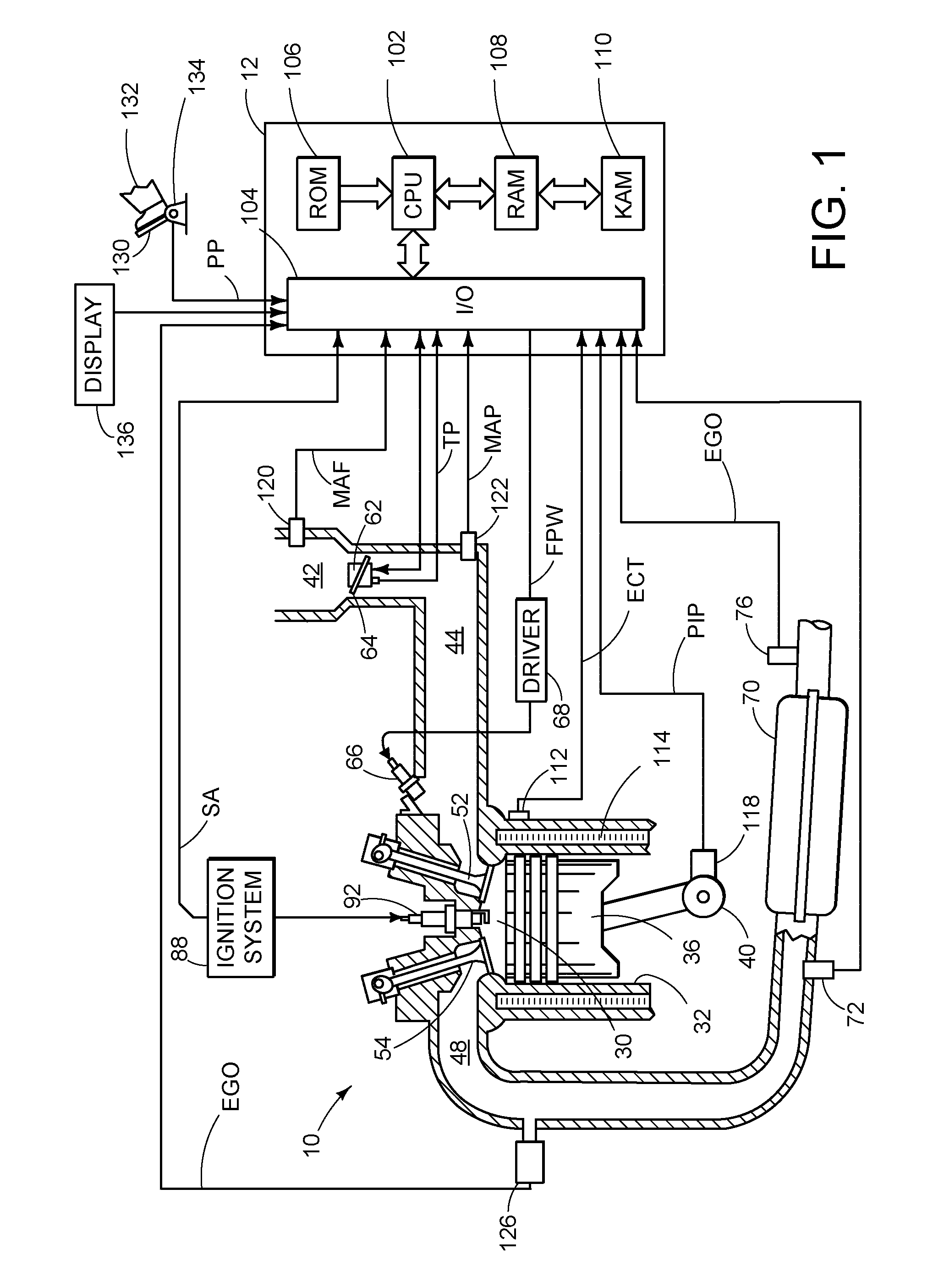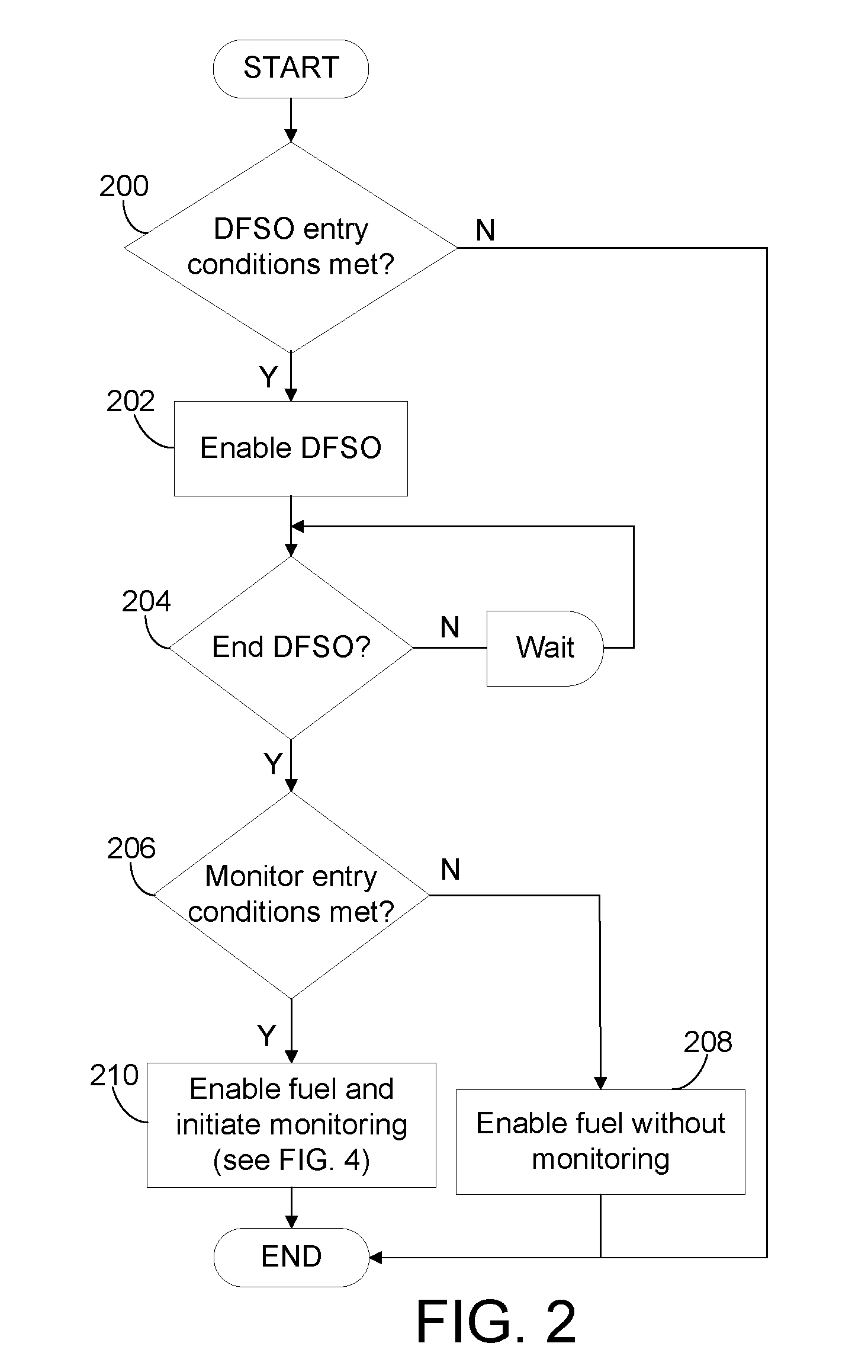Integrated fuel catalyst monitor
a catalyst monitor and fuel catalyst technology, applied in the direction of electric control, machines/engines, mechanical equipment, etc., can solve the problems of specific nox trapping catalyst requirements that may be ineffective for lower emission regulations, reduce efficiency, and risk of catalyst oversaturation, so as to reduce the reduction of combustion by-products, reduce the risk of oversaturation, and reduce the effect of emissions
- Summary
- Abstract
- Description
- Claims
- Application Information
AI Technical Summary
Benefits of technology
Problems solved by technology
Method used
Image
Examples
Embodiment Construction
[0017]The following description relates to a system and method for monitoring an emission control system following a deceleration fuel shut-off event. FIG. 1 shows an example combustion engine with an emission control device coupled to the exhaust. The catalyst monitoring routine may be initiated following a DFSO event, in response to a driver tip-in to come out of the DFSO event. FIGS. 3A, 3B, and 3C show examples of air-fuel variations of a fuel injector, an air-fuel sensor upstream of the emission control device, and an air-fuel sensor downstream of the emission control device, respectively, during an example catalyst monitoring event. The example catalyst monitoring routine shown in FIG. 4 determines an oxygen storage capacity (OSC) of the catalysts in the emission control device based on an amount of rich products required to cause a sensor to become richer than a threshold. In one example, the sensor may be located at full volume. In another example the sensor may be located a...
PUM
 Login to View More
Login to View More Abstract
Description
Claims
Application Information
 Login to View More
Login to View More - R&D
- Intellectual Property
- Life Sciences
- Materials
- Tech Scout
- Unparalleled Data Quality
- Higher Quality Content
- 60% Fewer Hallucinations
Browse by: Latest US Patents, China's latest patents, Technical Efficacy Thesaurus, Application Domain, Technology Topic, Popular Technical Reports.
© 2025 PatSnap. All rights reserved.Legal|Privacy policy|Modern Slavery Act Transparency Statement|Sitemap|About US| Contact US: help@patsnap.com



